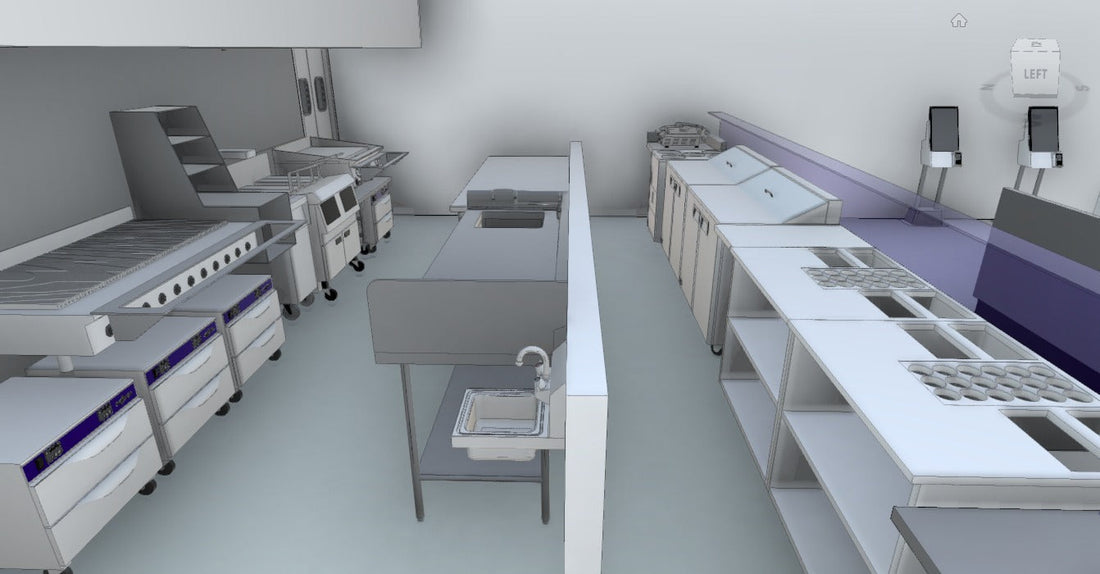
What are the 5 Ps of expansion for emerging restaurant brands?
In restaurant development how do we figure out what needs to be addressed first? Or the best way to store and manage project relevant information? Or the correct stakeholder assignment for a cross-functional process? During the development of our Brand Blueprint, our north star has been the 5 fundamental pillars for restaurant development: Prototypes, Partners, Products, Processes, and Projects; Otherwise known as the 5 “P’s”. You don’t have to brute force your way through every week as you struggle to stay on top of everything you need to do! Let us show you how each of these pillars is defined, and what it means for your brand’s ability to develop and meet growth goals quickly AND sustainably, so you can start to focus more on those aspects of the brand you want to do.
Prototypes
Definition: Prototypes refer to the models of new or current restaurant concepts and layouts.
Function: This starts with your ideal, perfect-world layout: furniture, fixtures, building materials, kitchen equipment etc. That ideal layout is then refined through workflow optimization, cost-saving analysis, and real estate or market aspects, as well as any other expert input from those the managers and developers of the brand consult with. By identifying potential issues and refining concepts in the prototype phase, restaurants can ensure a smoother rollout of new locations, leading to cost efficiency and improved customer experience. Emerging brands and quick-service giants utilize prototypes to communicate consistently to all stakeholders and bypass repetitive modeling and drawing portions in the design phase of each project. It’s not recommended to have more than 3 prototypes, as this can cause confusion and inconsistency in brand development and representation.
Partners
Definition: Partners are the various stakeholders and collaborators that contribute to a restaurant’s development and growth. These can include financial investors, developers, vendors, technology providers, brand representatives, and franchisees.
Function: Building strong partnerships is crucial for restaurant expansion. Effective collaboration with these partners fosters brand visibility, operational consistency, and business growth. Within the context of the 5 “P’s”, Partners represent all the possible stakeholders a brand may require through the entire development cycle of new locations. Having a complete and concise record of all the stakeholders, their contact information, associated deliverables, and general responsibilities is something that separates the brands who are serious about growth management and development from those brands that are not.
Products
Definition: Products in this context refers to the building materials used during restaurant construction and design, as well as the furniture, fixtures, and equipment (commonly noted as FF&E).
Function: The selection of high-quality equipment and building materials is essential for creating efficient and aesthetically pleasing restaurant spaces. Durable kitchen equipment ensures smooth operations and longevity, while innovative building materials can enhance the overall customer experience. Investing in state-of-the-art products not only improves operational efficiency but also aligns with brand innovation and differentiation. Emerging brands, in particular, benefit from using top-tier products to establish a strong foundation for growth and to maintain competitive advantage.
Processes
Definition: Processes refer to the standardized procedures and workflows that ensure efficient and consistent restaurant operations. Function: Efficient processes are essential for maintaining operational excellence. Standardizing construction procedures, project management protocols, and supply chain logistics reduces variability and enhances service quality. This standardization not only improves the build-out phase but also drives cost efficiency and scalability. Emerging brands aiming for rapid expansion must establish robust processes to manage growth effectively and maintain quality across multiple locations.
Projects
Definition: Projects are specific initiatives or undertakings aimed at achieving particular goals within the restaurant development framework.
Function: Projects in restaurant development can range from new location build-outs and renovations to technology upgrades and brand rollouts. Each project requires careful planning, execution, and management to ensure timely completion and alignment with the brand’s strategic objectives. Successful project management leads to efficient construction timelines, optimized restaurant build-outs, and enhanced brand visibility. Whether launching a new prototype location or upgrading kitchen equipment, well-executed projects are critical to driving restaurant growth and innovation.
Utilizing these categories for brand development and growth is essential if physical expansion, increased market share, customer loyalty, franchisee interest, and creating profitable businesses are to be achieved by a restaurant concept. Now that you have an understanding of these fundamental pillars, I highly recommend you check out our completely free tool: Brand Blueprint. This will allow you to utilize the pillars discussed above in a way never available before, and it requires absolutely no financial commitment on your end.